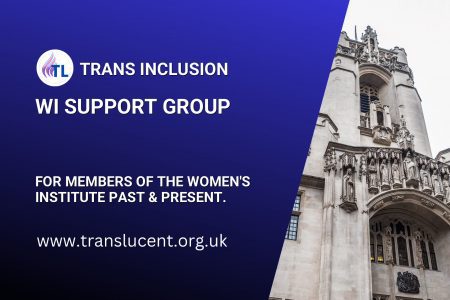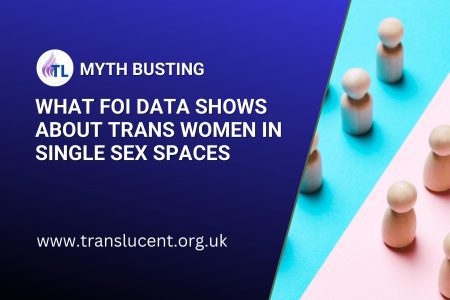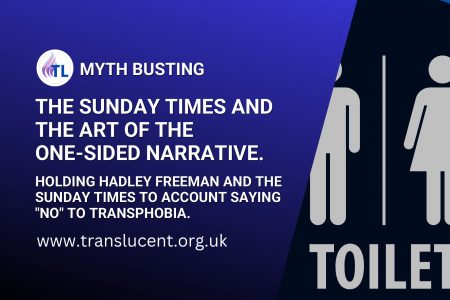Summary
Since when has a space suitable for one person with a lockable door not been a single sex space? A question asked by our CEO
A personal opinion by our CEO – this post does not represent TransLucent policy.
Since when has a space suitable for one person with a lockable door not been a single sex space?
This simple sentence underscores the significance of privacy in defining a single sex space, particularly in the context of toilets. It’s about being behind a closed, lockable door, a space where one can feel dignified and secure.
Many, quite legitimately, will argue that “single sex” starts at the entrance of a loo. Opponents can argue that male cleaners occupy hand washing areas, so that area is not single sex – that single sex starts at a cubicle door.
Are there laws to define where a single sex space starts and finishes?
I dont know.
Some will argue that they are “uncomfortable” with a trans woman in a space designated for women. Do the same apply to male cleaners? Are female racists worried about being close to black women?
Probably.
I support the need for single sex spaces, but ‘block bans, ‘ which are blanket policies that prohibit all trans people from accessing these spaces, equate to a human rights violation, in particular if they have a female anatomy.
Single sex spaces are needed in domestic abuse shelters operating on a communal living model, where women need other women to give support, to help heal their trauma. They are not required in domestic abuse shelters, where their working model is that of independent living, which allows for more individualised care and support.
There is certainly a case that some trans women should never be held in a female prison, but there is also a case that some, especially those who are not a risk to others and who have a female anatomy, are.
It is a fact that 29% of trans women held in a male prison are subjected to sexual assault – it’s a fact that is never reported in the mainstream press because it dont fit their narrative.
Hospital wards?
What are the curtains for if not to offer privacy and dignity?
The simple message in this post is that a “one size fits all” won’t work.
Every case, every situation is unique, and this is where the Equality Act should step in. The EA was drafted to ensure that human rights are balanced on a case-by-case basis, providing reassurance and confidence to all. After the SC judgment, many would argue that it is no longer the case.
With a little effort and goodwill, human rights can often be balanced.
When they can’t, sensible options must be available – because every person, woman, man and trans person has human rights.










 To provide the best experiences, we use technologies like cookies to store and/or access device information. Consenting to these technologies will allow us to process data such as browsing behaviour or unique IDs on this site. Not consenting or withdrawing consent, may adversely affect certain features and functions.
To provide the best experiences, we use technologies like cookies to store and/or access device information. Consenting to these technologies will allow us to process data such as browsing behaviour or unique IDs on this site. Not consenting or withdrawing consent, may adversely affect certain features and functions.